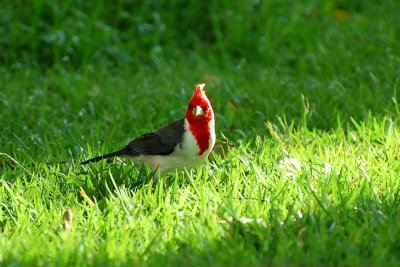How good is your vision? Mine is fair after two cataract surgeries.
Accurate manual focus on my 7200 is difficult if not impossible through the view finder and using live view is clunky shooting hand held.
Shooting birds handheld, I try to compensate by shooting with a high f stop for greater depth of field but that is imperfect particularly in low light or when pleasing bokeh is desired.
I am working on mastering auto focus and planning to upgrade lenses which don't auto focus very well. I pass on shooting little birds in distant trees because nothing autofocuses on them very well. Unless I was shooting only static subjects, I would not consider manual focus lenses.
Not very good. I either wear glasses or use the diopter adjustment on the camera.
I have some older AI-S lenses that I bought over the years. I am trying to decide whether I should sell them or keep them. They are not worth very much and its fun to go out sometimes without a meter and using manual focus.
I always laugh when I see cameras being rated for bird photography. The photo is always a large bird (heron, duck, eagle, or hawk) either flying against a clear sky or sitting on a tree. Most of my bird photography is of warblers, vireos, or sparrows in alder thickets or high up in trees. Small birds in a very busy environment.

They don't get much smaller than a Wren, do they?!

Another Wren

This is a Chiffchaff, one of the smallest warblers we have.

Do you see the Lesser Whitethroat checking you out?
[ATTACH alt="Here it is a bit more out in the open, less than 2" beak to tail!"]1747037[/ATTACH]
Here it is a bit more out in the open, less than 2" beak to tail!

The Goldcrest is one of our tiniest birds, not easy to catch with any camera, as they are never ever still.

This Herring Gull just passed me by, yards away, and I just fired away over the shoulder (not imagining any of the two shots would be sharp, and the camera did the rest — amazing!

The original Robin is a very easy pick, as it tends to sit still for a couple of seconds between the rushes.

The Redstart is also easy to shoot, as they tend to be motionless for seconds, before flying off.
All the birds above shot around the Ottenby Bird Station. Öland, Sweden. D7500, Sigma 150-600 Sports. All shot with AF-C, as far as I can recall — in really low light AF-S (and single point AF) works better.
I am looking at either the D7500 or the Panasonic G85. The G85 is not a camera for birds in flight but it has a pinpoint focus capability that may be good for the birds in the thicket. Continuous focus doesn't matter to me because I never get a chance to follow the birds. They appear in an opening of a thicket and then they are gone.
My wife uses the GX8 and a PL 100-400 for just that, with great success.
I did look at the D500 but weight is important to me. I am thinking about getting the New AF-S 300 E lens as its only 755g. A D7500, teleconverter, and the AF-S 300 P weighs 1585g (3 pounds 8 oz). Using the 1.3x mode, it gives me a 820mm F5.6 lens with a 12MB image which is fine for my purposes. The G85 with the Panasonic 100-400 is 1490g.
My kit is heavier, as I use the Sigma, a Gitzo monopod (heavy-duty version), but the combo is easy to carry on the shoulder, I think. Never would dream of carrying around my neck.
--
Tord_2 (at) photographer (dot) net
Nikon V2, J5, D3300, D7500 & D600, some m4/3.




















